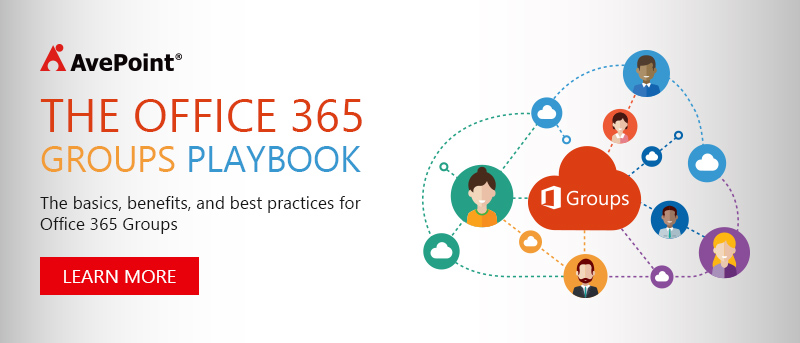Hi y’all! Welcome back to another edition of Dux Quax! Today we’re talking Microsoft Enterprise Mobility and Security (EMS) and Enterprise Client & Mobility (ECM) with one of the top dogs at Microsoft! Hope you enjoy!
As data moves from behind the firewall to cloud apps, organizations have to fundamentally rethink how to secure and protect their data without hindering users from working. This is a giant feat, and Microsoft completely understands that. That’s why they came up with Microsoft Enterprise Mobility and Security (EMS). They’re going beyond putting up data centers around the world – they’re also guaranteeing organizations can meet global data sovereignty rules and work in the cloud.
As you know, it’s always a pleasure for me to get together with experts in the tech sphere and bring you the latest and greatest news around Microsoft. This time around, I had the opportunity to sit down with Microsoft Corporate VP Brad Anderson at the mothership to really dig into Microsoft EMS and Office 365 adoption.
Check out the full interview below and as always, continue the conversation by reaching out to Brad (@Anderson) and I (@MeetDux) on Twitter. Enjoy!
More About Brad Anderson:
 |
Brad AndersonCorporate Vice President of Enterprise Cloud and Mobility |
|
Brad Anderson is the Corporate Vice President of the Enterprise Client & Mobility (ECM) team. This organization is focused on supporting a modern workforce that operates in a world of continuously connected devices. The ECM team is a key pillar of Microsoft’s Mobile-First, Cloud-First focus. As a part of this organization’s ambitious charter, Brad leads the effort to enable enterprises to be productive on the devices they love, while keeping the company secure. A major part of the organization’s function is to innovate and create the solutions that deliver a rich and consistent set of experience for users across all the devices they use. |
|
Check out Brad’s featured keynote at Microsoft Tech Summit Birmingham on Monday, March 27 at 10 am!
Full Transcript:
Dux: Hi, everybody. This is Dux, another episode of Dux Quax, very excited today. I’m here at the mothership with Brad Anderson. And I’m sure you all know Brad, but just in case, Brad, why don’t you quickly introduce yourself?
Brad: Yeah. You know I get a chance to oversee all of our enterprise mobility efforts here at Microsoft, been at Microsoft now for 14 years. I’ve ran config manager, systems center, anti-malware, Windows update, Windows server, EMS, and so I’ve had a chance to work on a lot of things, but it’s always been endpoint management, endpoint security for the enterprise.
Enterprise Mobility Definition: is the trend toward a shift in work habits, with more employees working out of the office and using mobile devices and cloud services to perform business tasks. Read More from Gartner >
Microsoft Enterprise Mobility Suite (EMS) provides an identity-driven security solution that offers a holistic approach to the security challenges in this mobile-first, cloud-first era. – Reference “Introducing Microsoft Enterprise Mobility + Security” Read More >
Microsoft EMS Components and Enhancements:
- Azure Active Directory Identity Protection
- Azure Active Directory Privileged Identity Management
- Microsoft Cloud App Security
- Azure Information Protection
- Intune Mobile App Management (MAM)
- Microsoft Advanced Threat
“With the addition and expansion of these innovative and holistic security solutions, we are renaming the Enterprise Mobility Suite (EMS) to Microsoft Enterprise Mobility + Security (EMS) to more accurately communicate its value.We are also announcing a new expanded Enterprise Mobility + Security E5 plan. This is described in the graphic below and will be available in Q4 calendar year 2016 in line with the new Secure Productive Enterprise plans announced today.”
Dux: Fourteen years, time flies, huh?
Brad: Yeah, yeah. Before that, I spent 12 years at Novell.
Dux: Wow. So I remember those days. Any vivid recollection on your first year here and fast forward today? If you look back and like, wow, I didn’t realize we did that back then?
Brad: Yeah, so fascinating, Microsoft recruited me for six years before I gave in and came to the dark side. Literally, it was the same recruiter that called me every single month for six years, just such a testament of tenacity and just commitment. It was amazing. I still talk to Wendy every once in a while…
Dux: Wow, that’s awesome.
Brad: Say, “Hey, how’s it going?” But it was six years every month. And then when I came up and interviewed, I had 14 interviews over two days, and I came out of that process thinking, “If they put this much effort, this much focus on making sure you hire the right people, no wonder they do so well.” So for me, I came here and after two days of interviewing, I’m going I want to work at this place for sure.
Dux: Talk about growth mindset, right?
Brad: Yeah. No, it really was. And then I came in at that point config manager. It was roughly \$200 million in business. Now our management business is several billion. In fact, with EMS it’s actually the fourth billion-dollar business that I’ve built for the business since I’ve been here.
Dux: Wow. Now, speaking of EMS, I’ve seen a lot of your presentations. One of the best analogies I’ve seen when you talk about the fort and all that, I love that. You have a picture of a fort out in… Is it U.K.?
Brad: Yeah, outside of London, the U.K., yeah.
Dux: So, for those not familiar, can you paint a picture of what EMS is all about, why it’s important, and why customers should be excited about EMS as they look forward to investing in the cloud and moving a lot of their workloads to the Office 365?
Brad: Well, the change that every organization is dealing with is this move to the cloud and the use of mobile devices. It fundamentally is changing how everyone has to work and how organizations need to enable their users. And the big analogy that I talk to people about is as the data moves from behind the confines of the firewall to these cloud apps, the traditional perimeter-based security model that we’ve used is no longer effective because the devices are talking directly to the cloud service and it’s not coming back to the perimeter. And so organizations have to fundamentally think about how they secure and protect the data while at the same time enabling users to work how, where, and when they want. And so with EMS, we set on this vision of how do you deliver in a work environment for users that they love and that IT trusts? And it’s really hard to do both, I got to tell you.
Dux: It is.
Brad: To build something that is trusted by IT and loved by users has been really hard, so we’ve had to engineer that. And so what we’ve done with EMS is we brought to market this solution that brings together device management, application management, identity management, identity protection, data protection, management of all your cloud apps, and all that has been brought together in one holistic, comprehensive solution, but then it’s deeply integrated with Office 365 and gives you that empowering work environment that is loved by users and trusted by IT.
Dux: And that’s a giant feat. I live and work in Washington D.C., and I work a lot with government agencies, and just the sheer investment Microsoft has put in, forget all the data centers and all the different clouds, but just all the certifications. There’s no provider out there that has achieved a lot of those worldwide, and Microsoft’s continuing this in the areas of security, compliance, and a lot of these new requirements that regulations put forth.
Brad: Well, as organizations are moving to the cloud, whether that’s as you’re an IaaS or PaaS, or if these cloud services like EMS and Office 365, organizations need to know, what is Microsoft doing to protect and secure the data? I mean certifications are just one way for us to demonstrate with third party validation what our processes are, what our tools are, how we architect it. And then, as you know, we’ve been investing around the globe. We have more regions in our public cloud than any other cloud provider in the world, about 38 as of the last time that…
Dux: Yeah. Yeah, recently South Korea opened or something like that.
Brad: Yeah, so we have more than Google and Amazon combined, and then we have all of our cloud services running in those. And one of the reasons that’s important is the rules and the regulations around data sovereignty are going to get more and more tight. Increasingly we’re hearing organizations saying, “Hey, our organization works in this country. Our data has to remain resident in the country. It can’t go outside. So we have to have a sovereign data center with all of our services run in there and guaranteed that the data stays in there.” So these investments that we’re making around the world are not just about having capacity on demand, but it’s also enabling organizations to meet the data sovereignty rules and regulations that they have around the world.
Dux: 100%, and that’s a lot of the conversations we’re having with customers now, especially global entities. So for those that have already moved to the cloud and really thinking about how they strategize and position their data security and data sovereignty plans, what are some of the first steps you would recommend to folks watching this?
Brad: Yeah. Well, I think the first thing is you have to understand where your data’s at because data has a certain amount of gravity.
Dux: Right.
Brad: And so as I talk with organizations, in the world that I deal with EMS, it really comes down to Office 365 and how are you going to use Office 365. In fact, what we see, it’s very rare that an organization’s now deploying Office 365 without EMS along there to observer tech and secure it. And so as organizations are moving to the cloud, first, most organizations will start you doing some debit tests, they’ll start to use some SaaS applications, and after they get comfortable, they get the approvals, and internally the understanding moves to, oh my word, this cloud stuff is not just about savings, but it’s about agility, it’s about velocity, it’s about enabling our users to do more than they’ve done in the past. Then the rate at which they move up to the cloud accelerates. And so start with something, get that experience. Often that’s going to be like Office 365 and EMS, or you’re going to move some of your data tests in the cloud. Get comfortable with it and then help the organization understand how you can benefit from the agility and from the things that you can do in the cloud you could never do on-prem.
Dux: 100%. Just we were talking two weeks ago, I was at Ignite, and Scott did his own demo, Scott Guthrie, and he was showing doctors, app logic. It’s just phenomenal, of these new innovations, how much you can do and accelerate your business compared to just two, three years ago, you couldn’t.
Brad: Yeah. I’ll be sitting there, in customer meetings with me and just Scott, he’ll be spinning up hundreds and hundreds of EMs on demand. I’ll be like, “Man, who’s paying for all that.”
Dux: Right. How do you keep up, right?
Brad: But you know what? That, I see, is one of the quintessential things that Scott expects of all of his leadership team, is you have to know your products, you have to know your technology. So like Scott, I do all my own demos because that actually forces me to make sure I understand inside and out how everything works.
Dux: Absolutely, absolutely. Well, appreciate your time. Now, before I let you go Brad, I have to ask you this question.
Brad: Sounds good.
Dux: If you were a Microsoft product besides EMS, what would you be and why?
Brad: The first that came to mind was HoloLens.
Dux: HoloLens, why?
Brad: Yeah. Yeah. It’s just cool.
Dux: There you go.
Brad: It’s forward-looking. It’s innovative. I can still remember the first time I put that on a couple years ago before it was even announced. I’m like, “Oh my word. This is going to change the world.”
Dux: Mixed reality, right?
Brad: Yeah. Well, to me, doing something that really changes the world is what brought me to Microsoft and what makes me so excited about working at Microsoft. We get to work on things that literally get used everywhere and can change the world, and I think HoloLens is going to be one of those things.
Dux: So would you say in your 14 years here; the excitement hasn’t dissipated?
Brad: People are more excited at Microsoft today than they were when I came 14 years ago.
Dux: Oh, wow.
Brad: And you can just… The culture, it’s this… there is a level of excitement and energy that is higher than it’s ever been in the 14 years that I’ve been here. And of course, Satya deserves a lot of that credit. The cultural change that he’s driven, the changes in architecture that allow us to actually do things in the cloud have driven it, but there is more excitement than ever in the 14 years that I’ve been here.
Dux: It’s quite obvious, right? But again, thanks Brad, appreciate it.
Brad: My pleasure.
Dux: Thanks for watching everybody, until the next episode. We’ll see you soon. Bye.
Check Out The Office 365 Groups Playbook
If you’re interested and looking for more information about the purpose of Groups and why you should care, check out this great video post by Dux Raymond Sy, where he interviews Microsoft’s Program Manager for Groups, Christophe Fiessinger.
Blogs about Groups |
On Demand Videos |









